Which of These Statements Is Not True of Ancient Egyptian Art
Ancient Egypt: History, dynasties, religion and writing
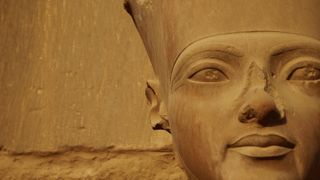
Ancient Egypt in North Africa was ane of the near powerful and influential civilizations in the region for over 3,000 years, from around 3100 B.C to xxx B.C. It left behind numerous monuments, documents and works of art that continue to be studied by scholars today.
Withal Egyptian civilization existed long before this period, and information technology has survived and flourished since. While the civilization's rulers, language, writing, climate, religion and borders have changed many times over the millennia, Egypt still exists as a modern-day land.
Ancient Egypt was closely connected with other parts of the world, bringing in and exporting goods, religions, food, people and ideas. At times ancient Egypt ruled territory exterior the modern-day land'due south edge, decision-making territory in what is now Sudan, Republic of cyprus, Lebanese republic, Syrian arab republic, Israel and Palestine.
The country was as well occupied by other powers in aboriginal times — the Persians, Nubians, Greeks and Romans all conquered Egypt at unlike points.
A number of names were used for Arab republic of egypt. A popular ancient name for Egypt was "Kemet," which ways the "blackness state." Scholars generally believe that this proper name derived from the fertile soil that was left over when the Nile overflowing receded in Baronial.
The Nile flooded betwixt June and Baronial each twelvemonth, and the fertile soil it created was vital to ancient Egypt's survival, with fertility playing an important role in Egyptian religion. The burial of Tutankhamun — in which hispenis was mummified — is just one example of how of import fertility was in the rituals and beliefs of the ancient Egyptians.
The country'southward ancient rulers are referred to today as "pharaohs," although in ancient times they each used a series of names as part of a royal titular, wrote Ronald Leprohon, an Egyptology professor at the University of Toronto, in his book "The Dandy Proper noun: Ancient Egyptian Royal Titulary" (Society of Biblical Literature, 2013). The word pharaoh originates from the Egyptian term "per-aa," which means "the Nifty House," Leprohon wrote. The term was offset incorporated into a majestic championship during the rule of Thutmose III (reign circa. 1479 to 1425 B.C.), Leprohon wrote.
Prehistory
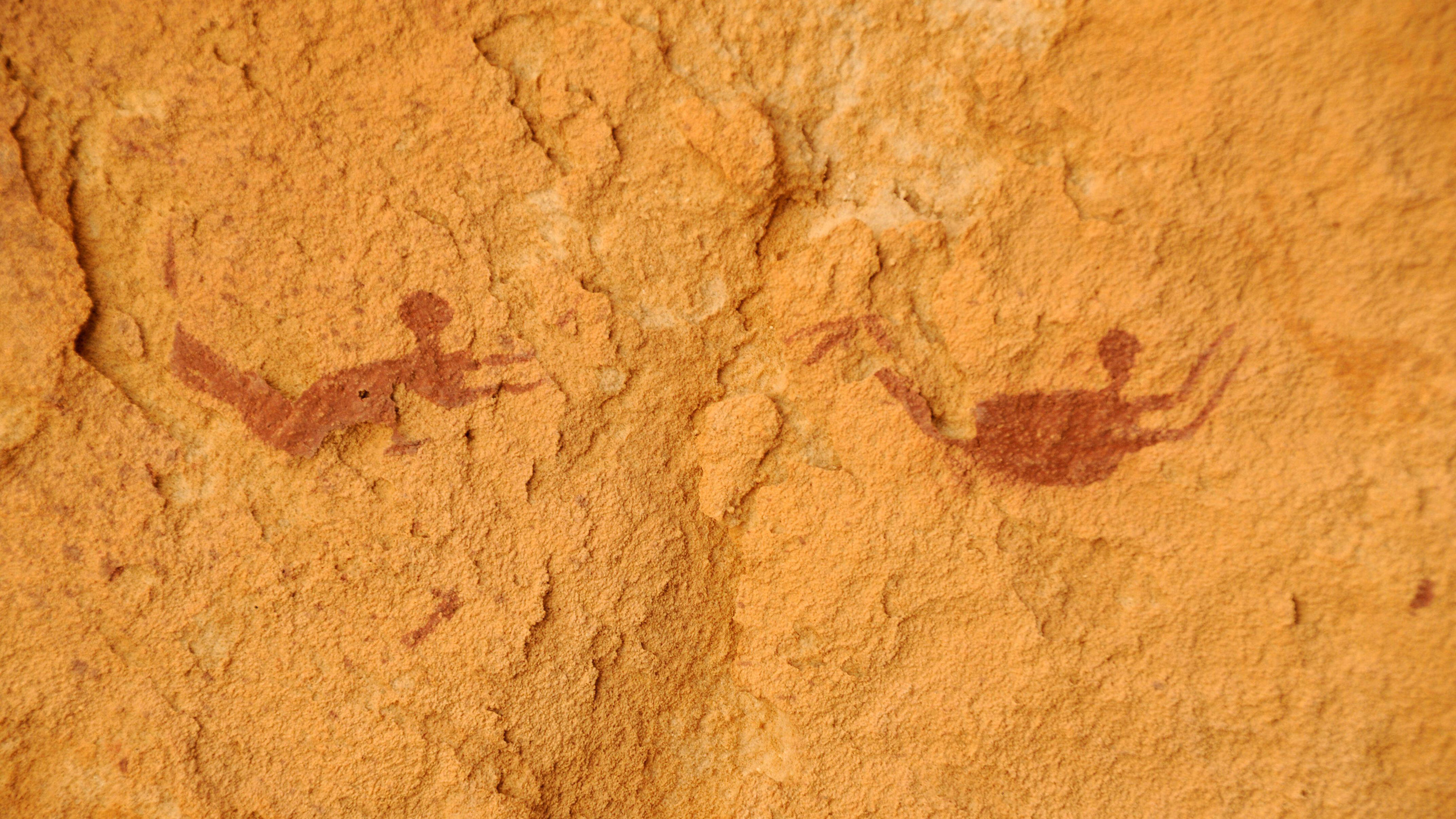
When exactly early on hominids commencement arrived in Egypt is unclear. The earliest migration of hominids out of Africa took place almost 2 million years ago, with modern humans dispersing out of Africa about 100,000 years ago. Egypt may take been used to achieve Asia in some of these migrations.
Villages dependent on agriculture began to appear in Egypt near 7,000 years agone. The civilization'south primeval written inscriptions appointment back almost 5,200 years and reveal information about the early rulers of Egypt, Alive Science previously reported. These early rulers include Iry-Hor, who, according to the inscriptions, founded Memphis, a city that served as Egypt's capital for much of its history. The inscriptions too certificate a queen named Neith-Hotep, who ruled every bit a regent for a young pharaoh named Djer. sometime In the belatedly predynastic period.
How and when ancient Egypt was united into one kingdom is a matter of debate among archaeologists and historians. 1 possibility is that a number of smaller states coalesced into ii kingdoms — Upper and Lower Egypt — and then these two kingdoms united. After Egypt was united pharaohs were ofttimes depicted wearing two crowns — one for Lower Egypt and another for Upper Arab republic of egypt.
Egypt's climate was much wetter in prehistoric times than it is today, and some areas that are now arid desert were one time fertile. One famous archaeological site where this can be seen is at the "cavern of swimmers," every bit information technology is called today, on the Gilf Kebir plateau in southwest Egypt. The cave is now surrounded past miles of barren desert; however, information technology has rock art showing what some scholars interpret equally people swimming. The exact appointment of the rock art is unclear, although scholars think that it was created in prehistoric times.

Egypt'southward 30 dynasties
Ancient Arab republic of egypt's history has traditionally been divided into 30 (or sometimes 31) dynasties. This tradition started with the Egyptian priest Manetho, who lived during the third century B.C. His accounts of ancient Egyptian history were preserved by aboriginal Greek writers and, until hieroglyphic writing was deciphered in the 19th century, were among the few historical accounts that scholars could read.
Modern-twenty-four hour period scholars oftentimes group these dynasties into several periods. Dynasties ane and ii date back around 5,000 years and are often called the "Early Dynastic" or "Archaic" period. The first pharaoh of the commencement dynasty was a ruler named Menes (or Narmer, as he is called in Greek). He lived over v,000 years agone, and while aboriginal writers sometimes credited him as existence the first pharaoh of a united Egypt, nonetheless archaeological enquiry suggests that this is not true. Recently found inscriptions tell of rulers — such as Djer and Iry-Hor — who appear to have ruled before and other finds have been fabricated which suggest that there were pharaohs before Menes who ruled a united Egypt, Live Science previously reported. Scholars sometimes refer to these pre-Menes rulers as being part of a "dynasty zero."
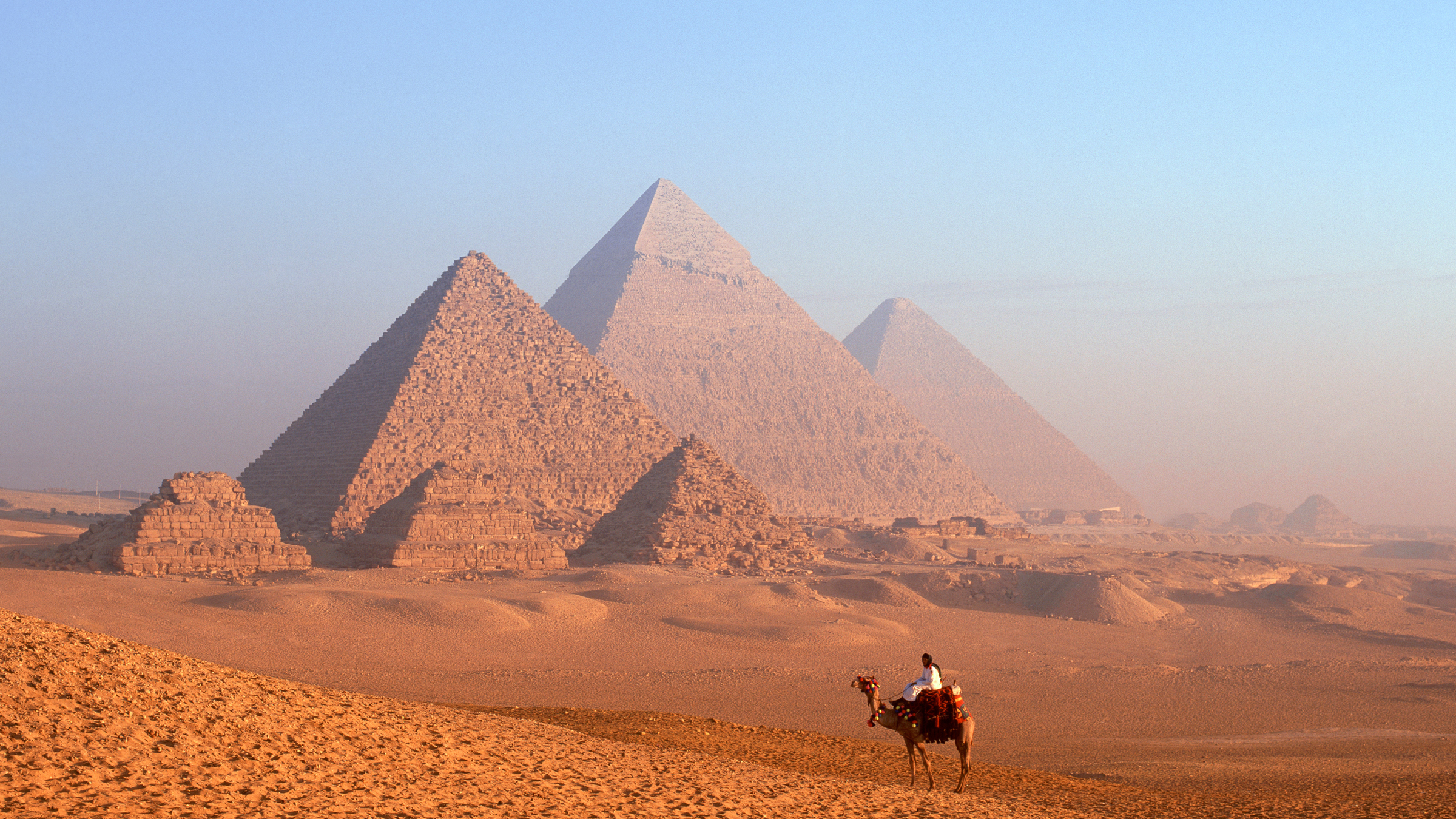
Dynasties 3 to six date from roughly 2650 to 2150 B.C. and are oft grouped together into a time period chosen the "Old Kingdom" past modernistic-solar day scholars. During this fourth dimension pyramid-edifice techniques were developed and the pyramids of Giza were built. Papyri that are notwithstanding beingness deciphered suggest that groups of professional workers — sometimes translated equally "piece of work gangs" — played a major role in the structure of the pyramids, equally well equally other structures.
From 2150 to 2030 B.C. (a time flow that encompassed dynasties seven to x and office of xi) the central regime in Egypt was weak and the country was often controlled by different regional leaders. Why the Erstwhile Kingdom collapsed is a matter of contend amidst scholars, withresearch indicating that drought and climate change played a pregnant role. During this time, cities and civilizations in the Middle East also complanate, with evidence at archaeological sites indicating that a catamenia of drought and arid climate hitting sites across the region.
The 12th, 13th and part of the 11th dynasties are often chosen the "Middle Kingdom" by scholars and lasted from around 2030 to1640 B.C. At the first of this dynasty, a ruler named Mentuhotep II (who reigned until about 2000 B.C.) regained control of the whole country. Pyramid edifice resumed in Egypt, and a sizable number of texts of literature and science were created. Among the surviving texts is a document now known as the Edwin Smith surgical papyrus, which records a multifariousness of medical treatments that modern-day medical doctors have hailed as beingness advanced for their time.
Dynasties 14 to 17 are oft grouped together as the "2d Intermediate Period" by modern-day scholars. During this time, the central government over again complanate in Egypt, and a group chosen the "Hyksos" rose to power, controlling much of northern Egypt. While the Hyksos may accept originally been from the Levant (an area that encompasses mod-day Israel, Palestine, Lebanon, Jordan and Syrian arab republic), inquiry indicates that they were already in Egypt at the time the authorities collapsed. 1 gruesome find from this time period is a series of severed hands, which were found at a palace at the metropolis of Avaris, the capital of Hyksos-controlled Egypt. The severed hands may take been presented by soldiers to a ruler in commutation for gold.
Scholars often refer to dynasties 18 to 20 as encompassing the "New Kingdom," a period that lasted around 1550 to 1070 B.C. This period took identify after the Hyksos had been defeated by a series of Egyptian rulers and the country reunited. Perhaps the most famous archaeological site from the New Kingdom is theValley of the Kings, which holds the burial sites of many Egyptian rulers from this period, including Tutankhamun (reign circa 1336 to 1327 B.C.), whose rich tomb was found intact in1922. The pharaohs stopped edifice pyramids during the New Kingdom for a diversity of reasons — one of which was to provide better security against tomb robbers.
The 21st to 24th dynasties (a period from effectually 1070 to 713 B.C.) are frequently called the "3rd Intermediate Period" by modern-day scholars. The cardinal authorities was sometimes weak during this time period, and the country was non always united. During this fourth dimension cities and civilizations across the Middle Due east had been destroyed by people from the Aegean, whom mod-day scholars sometimes call the "Sea Peoples." While Egyptian rulers claimed to have defeated the Ocean Peoples in battle, it didn't forestall Egyptian civilization from collapsing. The loss of trade routes and acquirement may have played a office in the weakening of Egypt'south key government.
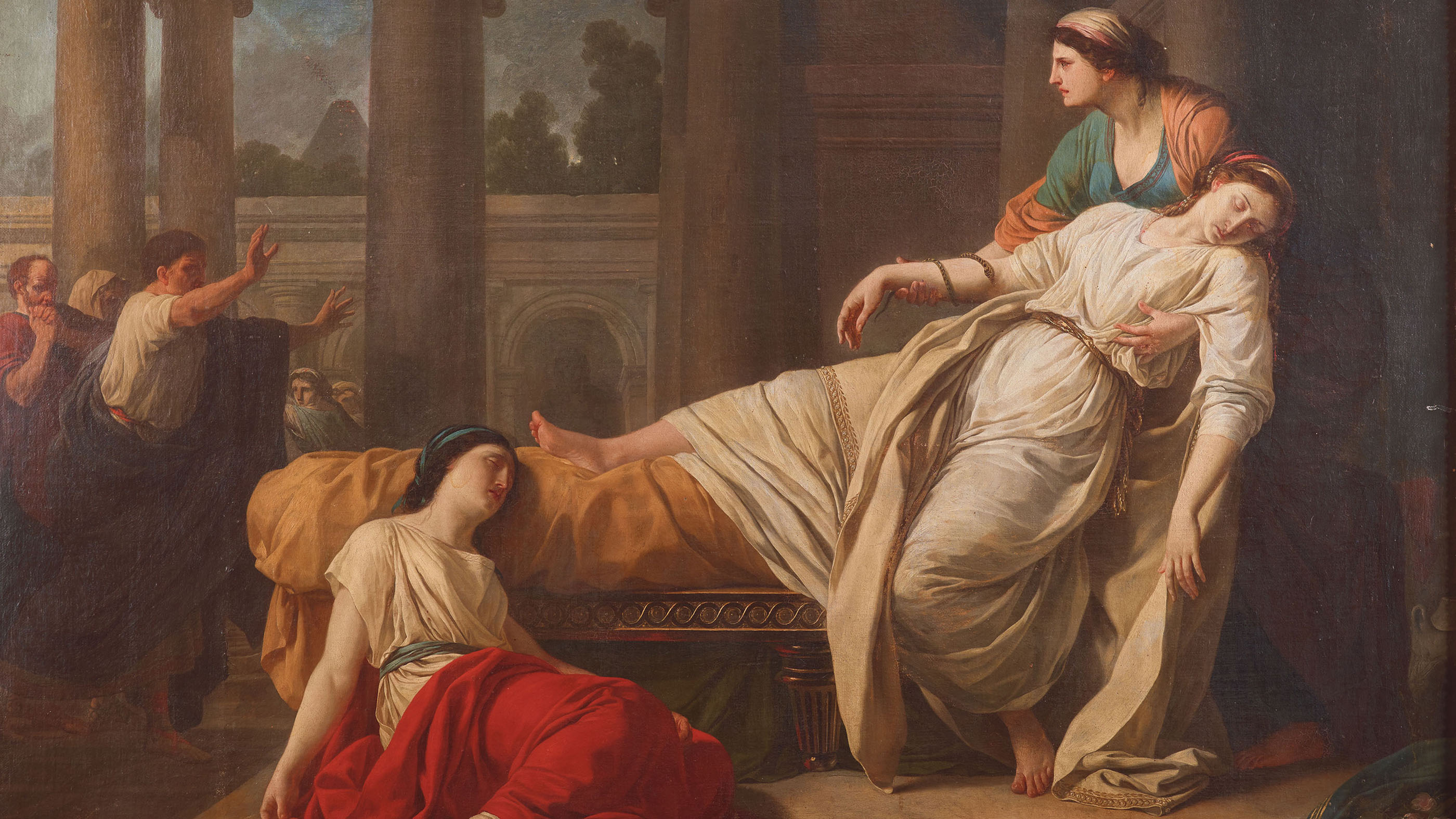
Dynasties 25 to 31 (from around 712 to 332 B.C.) are frequently referred to every bit the "Late Menstruum" past scholars. Egypt was sometimes under the control of foreign powers during this time. The rulers of the 25th dynasty were from Nubia, an area located in modernistic-day southern Egypt and northern Sudan. The Persians and Assyrians also controlled Egypt at different times during the Belatedly Menses.
In 332 B.C.Alexander the Great collection the Persians out of Arab republic of egypt and incorporated the state into the Macedonian Empire. Subsequently Alexander the Great's death, a line of rulers descended from Ptolemy Soter, one of Alexander's generals, came to ability. The concluding of these "Ptolemaic" rulers (as scholars often call them) wasCleopatra VII, who died by suicide in 30 B.C after the defeat of her forces by Octavian, who would later be named the Roman emperor Augustus, at theBattle of Actium. After her death, Egypt was incorporated into the Roman Empire.
Although the Roman emperors were based in Rome, the Egyptians treated them equally pharaohs. One excavated carving shows the emperor Claudius (reign A.D. 41 to 54) dressed as a pharaoh, Live Science reported. The etching has hieroglyphic inscriptions saying that Claudius is the "Son of Ra, Lord of the Crowns," and "Male monarch of Upper and Lower Egypt, Lord of the Two Lands."
Neither the Ptolemaic or Roman rulers are considered to exist function of a numbered dynasty.
Religion
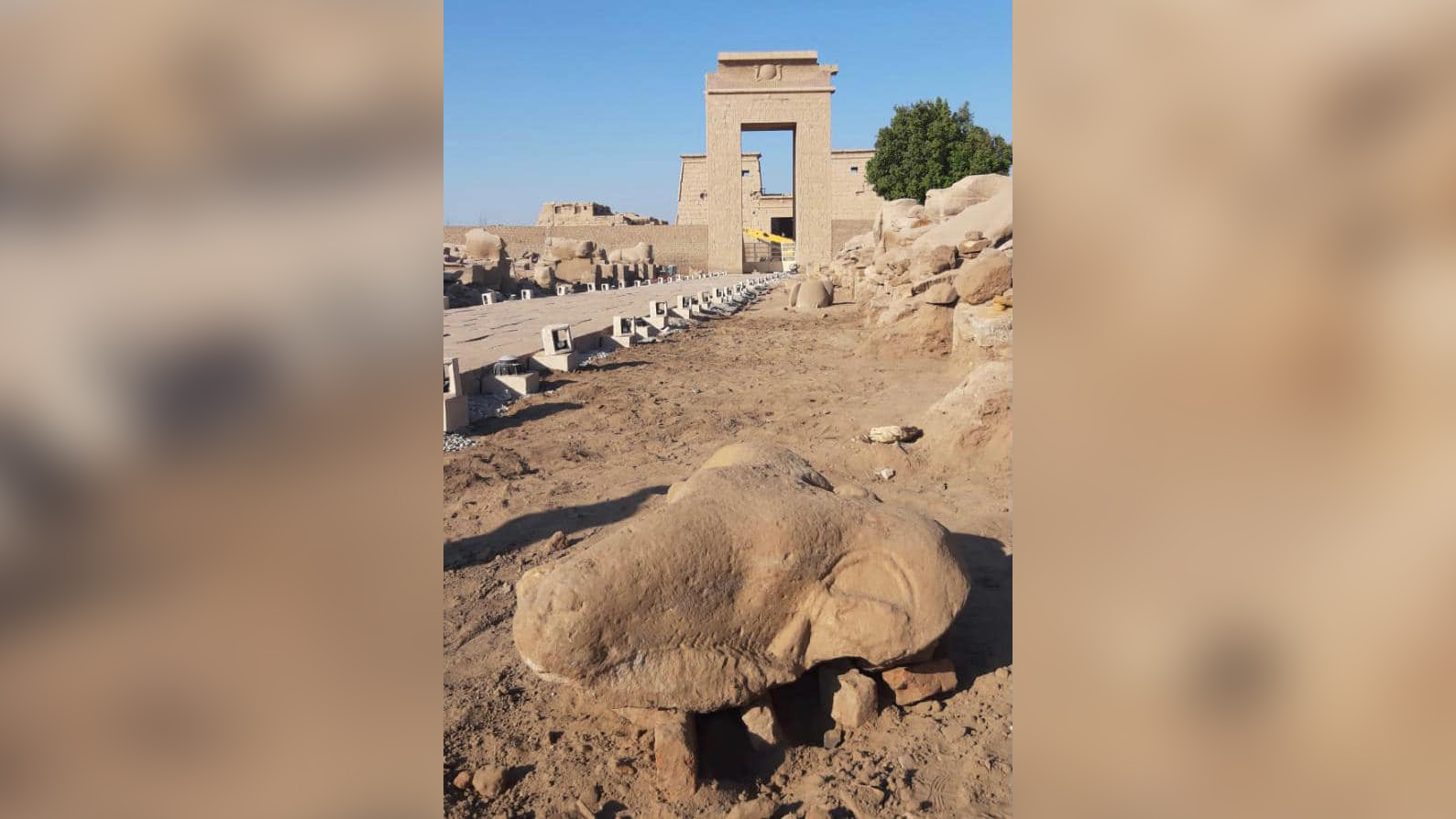
Throughout much of Egypt'southward ancient history its people followed a polytheistic organized religion in which a vast number of gods and goddesses were venerated. One of the most important was Osiris, god of the underworld.Abydos was an important cult eye for him, and numerous temples and shrines were constructed at the site in his honor.
Amun-Ra — a god associated with the sun — became peculiarly important during the New Kingdom and was associated with the city of Luxor (ancient Thebes). The Karnak Temple circuitous was built near Luxor in honor of this god.
Navigating the underworld was vital to the aboriginal Egyptians, who believed that the dead could achieve a paradise of sorts, where they could live forever. Egyptian dead were sometimes mummified, preserving the body, and were sometimes buried with spells to assist them in navigating the underworld. These spells included excerpts from what are sometimes called the "Book of the Dead" — a 13 foot-long (4 meters) copy of which was recently found in an aboriginal burying shaft, Live Science reported.
In ancient Egyptian mythology, ane of the first steps in navigating the underworld was to counterbalance a person'due south deeds confronting the feather of Maat, who was a god associated with truth, justice and order. If the person had committed a nifty bargain of wrong, the person'southward heart would be heavier than the plumage and the person's soul would be obliterated. On the other hand, if their deeds were generally good, they passed forward and had the opportunity to successfully navigate the underworld.
Figurines chosen shabti were often buried with the deceased. Their purpose was to practise the deceased's work in the afterlife for them.
Egyptian organized religion did not remain static but changed over time. I major change occurred during the reign of the pharaohAkhenaten (circa 1353 to 1335 B.C.), a ruler who unleashed a religious revolution that saw Egyptian religion get focused around the worship of "Aten" the lord's day disk. Akhenaten built an entirely new capital in the desert at Amarna and ordered the names of some of Egypt'southward deities to exist defaced. Afterwards Akhenaten's death his son, Tutankhamun, denounced him and returned ancient Egypt to its previous polytheistic faith.
When Egypt came under Greek and Roman rule, the new rulers' gods and goddesses were incorporated into Egyptian religion. Another major change occurred later the first century A.D. when Christianity spread throughout Egypt. At this time Gnosticism, a religion that incorporated some Christian beliefs, also spread throughout Egypt, and a large corpus of Gnostic texts were discovered in 1945 in southern Egypt near the urban center of Nag Hammadi.
Islam spread throughout the land after A.D. 641, when the country was captured by a Muslim army. Today, Islam is expert by the majority of Egypt's inhabitants, while a minority are Christian, many existence office of the Coptic Church.
Egyptian writing
The earliest inscriptions date back about 5,200 years and were written in a hieroglyphic script.
"Aboriginal Egyptian was a living oral language, and nearly hieroglyphs represent the sounds of consonants and certain emphatically expressed vowels," wrote Barry Kemp, a professor of Egyptology at the University of Cambridge, England, in his book "100 Hieroglyphs: Think Like an Egyptian" (Granta Books, 2005). Kemp noted that the ancient Egyptians also developed "an abbreviated 'long hand' form of writing which we call 'hieratic.'" During the first millennium A.D. this abbreviated hieratic script was supplanted by a new course of brusque-form writing called "Demotic."
Egyptian language changed over the millennia, with scholars often subdividing the surviving writings into categories such as "Old Egyptian," "Heart Egyptian" and "Late Egyptian."
The Greek language became widely used in the time after Egypt was conquered by Alexander the Great. In the late 19th century, archaeologists excavated one-half a one thousand thousand papyri fragments, most of which were written in Greek, at the ancient Egyptian town of Oxyrhynchus in southern Egypt, dating to the early centuries A.D.
Coptic, an Egyptian language that uses the Greek alphabet, was widely used afterwards Christianity spread throughout Arab republic of egypt. As Greek and Coptic grew in popularity, the use of the hieroglyphic writing way declined and became extinct during the fifth century A.D. Afterwards A.D. 641 the Arabic language spread in Egypt and is widely used in the land today.
Additional resources
- In this History Channel documentary, you'll larn how the ancient Egyptians harnessed the power of applied science to build an empire. The video is nearly 1.5 hours long.
- The Australian Museum put together a timeline of historic and other events in ancient Egypt, including a breakup of each dynasty and the significant dates within that dynasty.
- This DK volume "Aboriginal Egypt: The Definitive Visual History" could be a fun way to teach kids about the marvels of ancient Arab republic of egypt.
Source: https://www.livescience.com/55578-egyptian-civilization.html
Post a Comment for "Which of These Statements Is Not True of Ancient Egyptian Art"